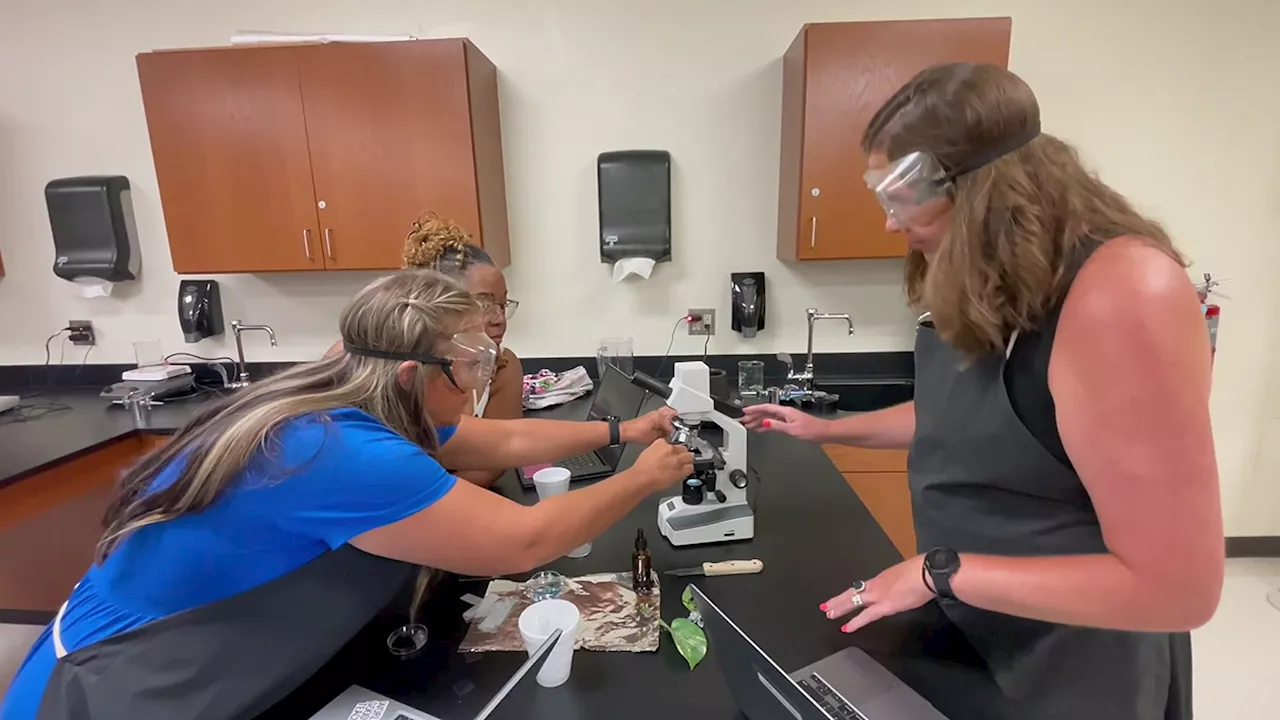An astrophysicist explains the science behind a recent incredible James Webb Space Telescope image. How does gravity warp light?
Astrophysicist Jacqueline McCleary from Northeastern University explains the science behind a new image captured by NASA’s James Webb Space Telescope . The image reveals a cosmic formation resembling a question mark, stirring excitement among astronomers., McCleary offers much more information about it. McCleary explains that this intriguing formation results from a rare alignment between two distant galaxies and a phenomenon known as gravitational lensing.
“There’s still a lot of mystery surrounding this system. What’s truly astonishing about it is that gravitational lensing — with its multiple images, brightening, and magnification—enables us to study the process of galaxy assembly, which is how a galaxy constructs itself, in incredibly detailed and spatially resolved ways,” McCleary states.
These images are essential for astronomers and astrophysicists, who, despite centuries of research, continually endeavor to answer the fundamental question about the universe: How are galaxies formed?However, McCleary clarifies that the “question mark pair,” as astronomers have come to call this formation, isn’t actually shaped like a question mark.
What stands out most about the image is not so much what it depicts, but rather when it shows, McCleary says. The rare combination of cosmic alignment and gravitational lensing has effectively created a time machine: This galaxy cluster is so distant that the light being captured by the Webb telescope is from seven billion years ago, roughly half of the universe’s current age.
United States Latest News, United States Headlines
Similar News:You can also read news stories similar to this one that we have collected from other news sources.
 The science behind why you shouldn’t microwave food in plastic containersPlastic containers that can be used in the microwave aren't safe for your health. Here's why you should be using glass instead.
The science behind why you shouldn’t microwave food in plastic containersPlastic containers that can be used in the microwave aren't safe for your health. Here's why you should be using glass instead.
Read more »
 The science behind why you feel tired after being out in the sun all dayEver wondered why sun fatigue hits so hard after a day out by the pool? Here's what science has to say about it.
The science behind why you feel tired after being out in the sun all dayEver wondered why sun fatigue hits so hard after a day out by the pool? Here's what science has to say about it.
Read more »
 Boosting cannabis production: The science behind bud abundanceCannabis sativa is highly valued for its cannabinoids, which are primarily produced in female inflorescences. However, the genetic control of inflorescence development remains largely unexplored, posing a significant challenge to optimizing flower and grain yield.
Boosting cannabis production: The science behind bud abundanceCannabis sativa is highly valued for its cannabinoids, which are primarily produced in female inflorescences. However, the genetic control of inflorescence development remains largely unexplored, posing a significant challenge to optimizing flower and grain yield.
Read more »
 Amazingly simple discovery extends Li-ion battery lifespan by 50% — meaning you don't have to replace your gadgets as oftenSkyler Ware is a freelance science journalist covering chemistry, biology, paleontology and Earth science. She was a 2023 AAAS Mass Media Science and Engineering Fellow at Science News. Her work has also appeared in Science News Explores, ZME Science and Chembites, among others. Skyler has a Ph.D. in chemistry from Caltech.
Amazingly simple discovery extends Li-ion battery lifespan by 50% — meaning you don't have to replace your gadgets as oftenSkyler Ware is a freelance science journalist covering chemistry, biology, paleontology and Earth science. She was a 2023 AAAS Mass Media Science and Engineering Fellow at Science News. Her work has also appeared in Science News Explores, ZME Science and Chembites, among others. Skyler has a Ph.D. in chemistry from Caltech.
Read more »
 Teachers start school with training in new, engaging science labsNorth Texas Science teachers set to introduce new, more innovative science labs
Teachers start school with training in new, engaging science labsNorth Texas Science teachers set to introduce new, more innovative science labs
Read more »
 Over 40% of pet cats play fetch — but scientists aren't quite sure whySkyler Ware is a freelance science journalist covering chemistry, biology, paleontology and Earth science. She was a 2023 AAAS Mass Media Science and Engineering Fellow at Science News. Her work has also appeared in Science News Explores, ZME Science and Chembites, among others. Skyler has a Ph.D. in chemistry from Caltech.
Over 40% of pet cats play fetch — but scientists aren't quite sure whySkyler Ware is a freelance science journalist covering chemistry, biology, paleontology and Earth science. She was a 2023 AAAS Mass Media Science and Engineering Fellow at Science News. Her work has also appeared in Science News Explores, ZME Science and Chembites, among others. Skyler has a Ph.D. in chemistry from Caltech.
Read more »
